A Few Subclasses
NOTICE: These have not been play-tested. Use at your own risk.

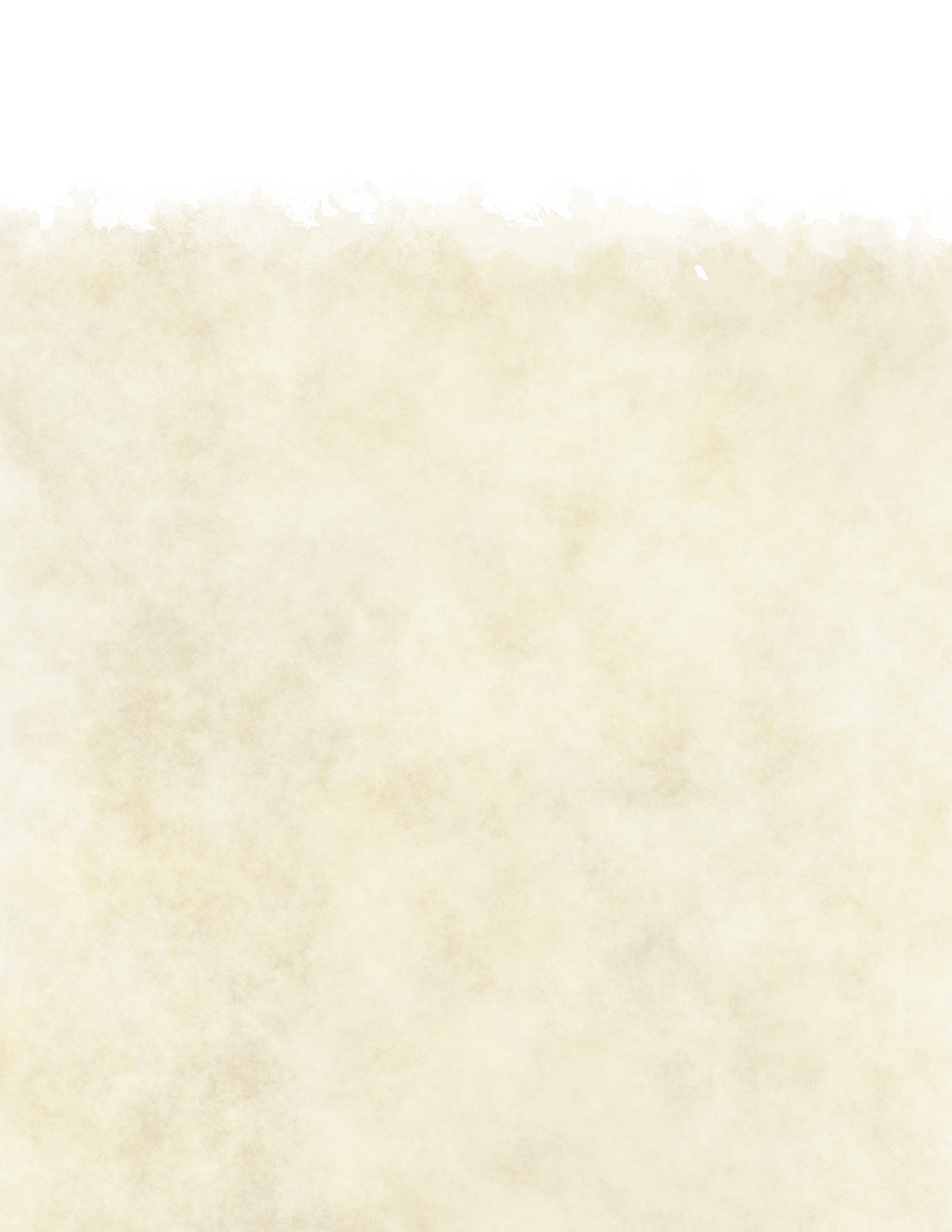
Monk Tradition
Way of Beasts
Monks of the Way of Beasts revere nature and the beasts that reside in it. These monks dedicate their studies to the movement, habits, and mannerisms of certain beasts, as well as, beasts as a whole. Through observation and training, Way of Beasts monks are able to mimic techniques and tactics associated with the beasts they study. They are also able to focus their Ki energy into animal forms granting them abilities beyond their basic teachings.
Animal Technique
Your intense training has taught you to harness the essential qualities of certain animals. Starting off, when choosing this tradition at 3rd level, choose two from the list.
Tiger Technique
When striking, the tiger uses its sharp, powerful claws to take down its foe. When you hit a creature with an unarmed attack, you can spend 1 ki point to deal an additional 1d4 piercing damage. This damage increases with your unarmed strike die.
Crane Technique
Your study of the crane allows you to use the momentum of an opponents attack against them. While you benefit from the Patient Defense feature, whenever an enemy misses you with an attack, you may make an unarmed strike against them as a reaction.
Mantis Technique
Using ki, you can mimic the chiton shell of the mantis. You can spend 1 ki point as a bonus action, and gain a bonus +2 to your AC until the start of your next turn.
Snake Technique
You have observed snakes that coil around their enemies, constricting them before striking. You have advantage on checks used to grapple.
Animal Nature
Also at 3rd level, your training has granted you key insights into the ways animals interact. Choose one of the following options.
Pack Tactics
Throughout your studies, you have noticed that many animals find strength in numbers. When a friendly creature is attacking a creature within 5 ft of you, as a reaction, you can expend 1 ki point to grant advantage on the attack roll. This must be given before the attack roll is made.
At 11th level it applies to any friendly creature attacking within 10 ft of you.
Toxic Nature
During your studies, you have noticed that the use of venom and poison is common among many different species. Further study into this has given you the ability to utilize this yourself. You may spend 1 ki point to cast the poison spray spell as a bonus action.
This spell's damage increases by 1d12 when you reach 6th level (2d12), 11th level (3d12), and 17th level (4d12).
Animal Focus
Your continued studies of animal nature have helped you learn the behavior of the animals you watch. At 6th level, you focus on an animal you have previously observed gaining one of the following based on your choice in Animal Technique.
Tiger Focus
Prerequisite: Tiger Technique
You are able to channel, through ki, the intimidating power of the fierce cat, causing paralyzing terror to your enemy. You spend 4 ki points to cast the slow spell as a bonus action.
Crane Focus
Prerequisite: Crane Technique
Further training and study of the crane's style has taught you patience, and how to use your opponent's power against them.
While you benefit from the Patient Defense feature, whenever an enemy misses you with an attack, you gain 1 ki point. If you have maximum ki points, you instead heal for 1d8 HP. You may benefit from this feature a number of times equal to your Wisdom modifier before you must finish a long rest.
Mantis Focus
Prerequisite: Mantis Technique
Your continued training in the way of the mantis has allowed your ki to make you even sturdier. You gain proficiency in Constitution saving throws.
Snake Focus
Prerequisite: Snake Technique
Your observation of the snake's ability to hit the vital areas of their prey have made you a more deadly fighter. Your monk weapon attacks score a critical hit on a roll of 19 or 20.
Also, because of your continued studies, you may now take the grapple attack action as an action or a bonus action.
Animal Ways
Beginning at 11th level, your ongoing studies have granted you an instinctual understanding of more animals you have observed. Choose one of the following options.
Spider Way
Study of nature's smaller creatures has led you to the spider. Your studies allow you to mimic the creation of webbing through your ki.
You may spend 1 ki point as a bonus action to create a long, web-like whip that lashes out at your command toward a creature within a 30ft range that you can see. If the attack hits, the creature takes 3d6 bludgeoning damage, and if the creature is Large or smaller, you pull the creature up to 10 feet closer to you. If the creature is moved within the reach of your unarmed strike, you may make one unarmed strike against the creature.
Watching the spider trap creatures in its webbing, you have learned to create your own traps. You gain proficiency with Trapper's Tools and are able to create traps with the appropriate supplies.
Monkey Way
You have studied monkeys and how they are exceptionally social creatures, gaining insight towards strength in numbers.
If an ally is within 10 feet of you, you may spend 4 ki points to gain advantage on a number of attack rolls up to your Wisdom modifier until the start of your next turn.
Monkeys are a playful and endearing bunch, constantly swinging through trees and clowning around. Your studies have brought you closer to them, allowing you to benefit from their dynamically agile stunts. You gain proficiency in Acrobatics or Athletics.
Bestial Mentality
Also at 11th level, you have become more intuitive in your demeanor, gaining further survival prowess. Choose one of the following options.
Basic Instinct
Through your studies, you have observed a number of predatory creatures, and your constant proximity to them has refined your natural instinct to danger. You have advantage on initiative rolls.
Animal Might
During your studies of larger animals, you have noticed that many are able to fight multiple enemies at once. You may spend 3 ki points once when you damage an enemy with a melee attack. If you do so, every creature within 5 feet of you must make a Dexterity saving throw. On a failure, the creature takes damage equal to 2d6 + your Dexterity modifier, and half as much on a success. The damage type is the same as the triggering attack's damage.
Animal Spirit
At 17th level, all of the time you spent with animals has given you a spiritual understanding. You gain one of the following based on your choice in Animal Ways.
Spider Spirit
Prerequisite: Spider Way
In focusing on the spider's behavior, you tap into the spirit of the spider. The spider's clever web creations and swiftness, prompt improved attacks, while the spider's versatility inspire new ways to get around.
You have advantage on checks made with Trapper's Tools. Additionally, your Spider Technique is improved. You may spend 1 additional ki point to gain the following benefits:
- The range of the attack granted by Spider Way increases by 10 feet.
- The damage increases by 2d6.
- The creature is pulled up to 10 feet closer to you.
- If you gain an unarmed strike the damage before proficiency is doubled
You may spend 3 ki points as an action to cast an improved web spell. Whenever a creature starts its turn while restrained by the spell, it takes 1d10 poison damage.
You may spend 3 ki points on your turn to cast spider climb as an action.
Monkey Spirit
Prerequisite: Monkey Way
All your hard work allows you to harness the spirit of the monkey. You gain its versatility, speed, and adaptability.
Versatility You earn double proficiency in which ever ability you chose in Monkey Way, either Acrobatics or Athletics.
Speed Whenever you use the Flurry of Blows feature, you can make three unarmed attacks, instead of two. You may spend 1 ki point to double the damage, before proficiency, of your third unarmed strike.
Adaptability You can mimic the speech of another person or the sounds made by other creatures. You must have heard the person speaking, or heard the creature make the sound, for at least 1 minute. A successful Wisdom (Insight) check contested by your Charisma (Deception) check allows a listener to determine that the effect is faked.
Credits
Thanks so much to Reddit user One1Knight1 for the awesome suggestions and revision help
Trapper’s Tools is Authored by Massimo Tartaro at DMs Guild
Picture by Anastasia Ovchinnikova
Created with GMBinder by Reddit user Gift_of_Goob
Bestial Dominance
Also at 17th level, you have learned to embrace the spirits of the animals you studied, embodying their dominance. You gain one of the following based on your choice in Bestial Mentality.
Primal Instinct
Prerequisite: Basic Instinct
After your exhausting study of nature's predators, the predatorial spirit resides in you, making it very difficult to surprise you. You gain blindsight within 10 feet of you at all times, and any surprise attacks against you are made at disadvantage. You have resistance to damage from surprise attacks.
Animal Superiority
Prerequisite: Animal Might
You emulate the spirits of large beasts through your ki. When facing an enemy your reach extends to nearby foes. You may spend 2 additional ki points whenever you use Animal Might to increase its damage to 5d8 + your Dexterity modifier.
Trapper's Tools
Trapper's Tools contains everything needed for the creation of traps and their cataloguing.
Components A trapper's kit includes 10feet of barbed wire, line roll, springs, bell, a pack of nails , small hammer, set of scrolls and white chalks.
Investigate When you search traps you also obtain informations about the effect of it's trigger (if it's mechanism isn't magic).
History Your mastery of traps includes knowledge history that allow you to know what traps prefer certain races.
Trapper Instinct As long as you stay 1.5 feet near your allies, as reaction an ally of your choice receives 1d4 on saving throw against traps.
All informations concerning traps can be found on page 120 of the DMG, the following table is based on the Trap Effects section. Trap DC determines its danger, bonus proficiency determines the trap damage. A trap might not inflict damage but a condition.
Conditions include: Prone, Poisoned, Restrained, Stunned, Blinded, Deafened, Grappled, Incapacitated, Paralyzed




Primal Path
Path of the Just
This barbarian seethes at the sight of injustice. When evil forces act against the helpless, a barbarian who follows the Path of the Just rages against these injustices. Heedless of their own well-being, they will fight for the downtrodden and protect their family, friends, and allies to their last breath.
Just Desserts
Righteous Fury
Starting when you choose this path at 3rd level, you can go into a righteous fury when you rage. While raging, the first creature you hit on each of your turns with a melee weapon attack takes extra damage equal to 1d6 + your proficiency.
Reckoning
At 3rd level, the creature you attacked with Righteous Fury now has disadvantage against any attack made against your allies. This effect lasts until the beginning of your next turn.
Infuriated Rage
At 6th level, when you are raging and an ally you can see takes damage your rage is amplified, bolstering your fortitude. You gain advantage on all saving throws and ability checks involving Constitution.
Savage Succor
Beginning at 10th level, using your reaction you can sacrifice yourself when an ally, within 10 ft of you, is attacked and hit. You can choose to take half of the damage (rounded up) or all of the damage, the damage taken ignores your Rage resistances. You can choose this after the attack roll is made and known but before attack damage is known.
After sacrificing yourself for your ally, your next turn is spent with disadvantage on attack rolls, ability checks, and saving throws. This ability can be used as many times equal to your Constitution modifier.
Half Damage Clarification
When taking half damage for your ally, and the damage is odd, you will take the greater of the two halves (i.e. Damage is 11. You will take 6, and your ally will take 5.).
Wrath of Justice
Starting at 14th level, your rage becomes a wrathful aura extending in a 30 ft radius. Anytime a creature that is hostile towards you enters the area, or starts their turn there they must succeed on a Wisdom saving throw or become frightened for 1 minute. In addition, on a failed save they receive 3d8 psychic damage, a successful save receives none. Also, while frightened, if the creature
.
succeeds on an attack roll their damage is reduced by Rage Damage + Constitution Modifier.
If the creature ends it's turn in a location where it doesn't have line of sight to you, the creature can make a Wisdom saving throw. On a successful save, the creature is no longer frightened.
Save DC = 8 + your proficiency bonus + your Strength modifier
Credits
- Created by reddit user Gift_of_Goob
- Alexander Shatohin artwork from artstation.com
- Jared Ondricek border page stains


Sorcerous Origins
Arcane Canvas
Your innate magic comes from colorful illustrations that appear on your skin. Because it is a very rare form of magic, its source is hard to pinpoint. It may have come from the touch of a powerful entity or a drop of dragon's blood. Maybe you were momentarily touched by another plane or were splashed by the magicks of a powerful sorcerer. Whatever the source may be, these marks seem to be permanent and are unable to be removed whether through magic or mutilation. As you grow in skill, new designs appear, attesting to your power.
Illustrated Screen
At 1st level, your origin provides you with a type of defensive focus. You gain Creative Focus and Visual Aid.
Creative Focus
Your unique magical origins cause your power to manifest differently than most sorcerers. At 1st level, you can use the illustrations that cover your skin as an arcane focus.
At 14th level, the gold you spend on materials to cast spells is halved.
Visual Aid
At 1st Level, as a result of your inked protected skin you have a natural AC of 12, and you can use your Charisma modifier instead of your Dexterity modifier when calculating your total AC.
Any armor or shield negate this effect.
Graphic Veneer
Starting at 6th level, you wear your markings like a second skin and are familiar with how they work. You gain proficiency in Stealth.
Additionally, you can expend 2 sorcery points to Hide, as a bonus action, by manipulating your marks to match your surroundings.
Beastly Icon
At 14th level, you gain a beastly companion of your choice up to large in size with a CR 3, which appears as a tattoo icon upon your body. You can release the icon in an unoccupied space within 20ft of yourself using an action. When released the icon turns into a living creature for up to four hours, and takes the traits and actions it represents (e.g. tattoo of a giant eagle gains a giant eagle's stats, actions, and abilities).
Using a bonus action you can recall the icon, then release it again using an action for it's remaining time. If the corporeal form reaches 0 hit points it will return to icon form.
If the corporeal beast returns to icon form due to 0 hit points, it can be summoned again at full hit points for 4 sorcery points and only for the remaining time of it's original life (died at 2 hrs of its lifetime, only has 2 hrs left). It cannot be summoned if it's life span has run out. A long rest is required to be able to release it again at full health for its full life span.
While your companion is in icon form, you can expend a number of sorcery points to gain access to any one of its abilities for one hour (e.g. gaining Keen Sight of a giant eagle, or its language skill to understand Auran). Only one of these may be used at a time, and accessing a new ability negates the other. See the Icon Abilities chart for sorcery point cost.
Icon Abilities
| Sorcery Points | Icon Ability |
|---|---|
| 1 | Language or Movement (Walk) |
| 2 | Sense (Blindsense, Tremorsense, etc) |
| 3 | Action or Trait |
| 4 | Movement (Fly or Swim) |
Twice per level you can change your companion
- Casting Time: 6 hours
- Components: M, V, S (10gp worth of fine ink, a quill, and a representation of the animal you choose which must be consumed by fire)
- Duration: Instantaneous
Portrait of Menace
Beginning at 18th level, the control you have gained over your ink allows you to use your markings as a menacing defense system. Using 5 sorcerer points you create a 20-foot-radius sphere for one minute. When a creature enters the area for the first time on a turn or starts its turn there, it must make a Constitution save. On failure, the creature takes 9d6 necrotic damage. On a success, the creature takes half damage. This does not affect allies.
Credits
- Created by reddit user Gift_of_Goob
- Illustrated Man picture by Claire Delepee on Artstation
- Jared Ondricek page stains
- Luna picture by Pauline Voss on ArtStation




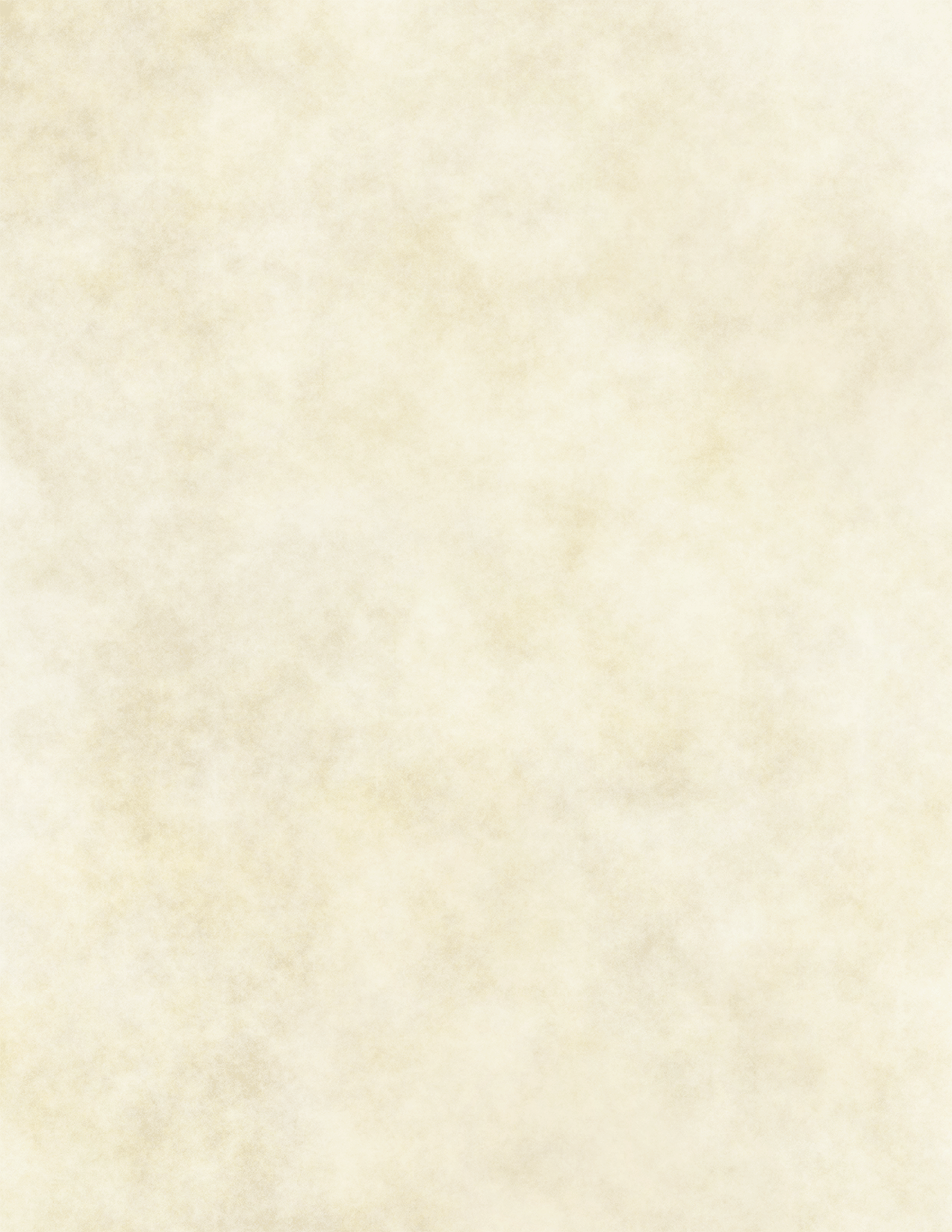



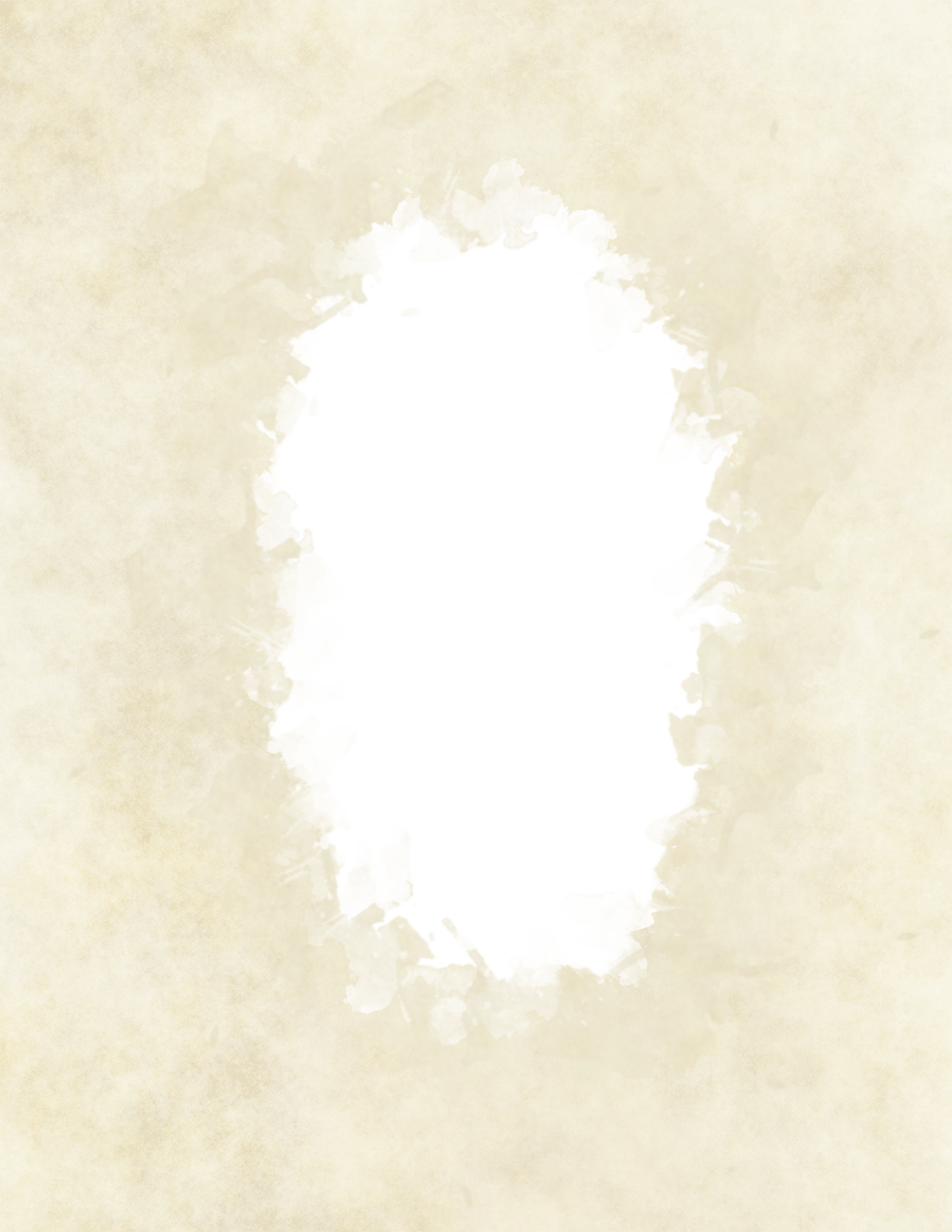
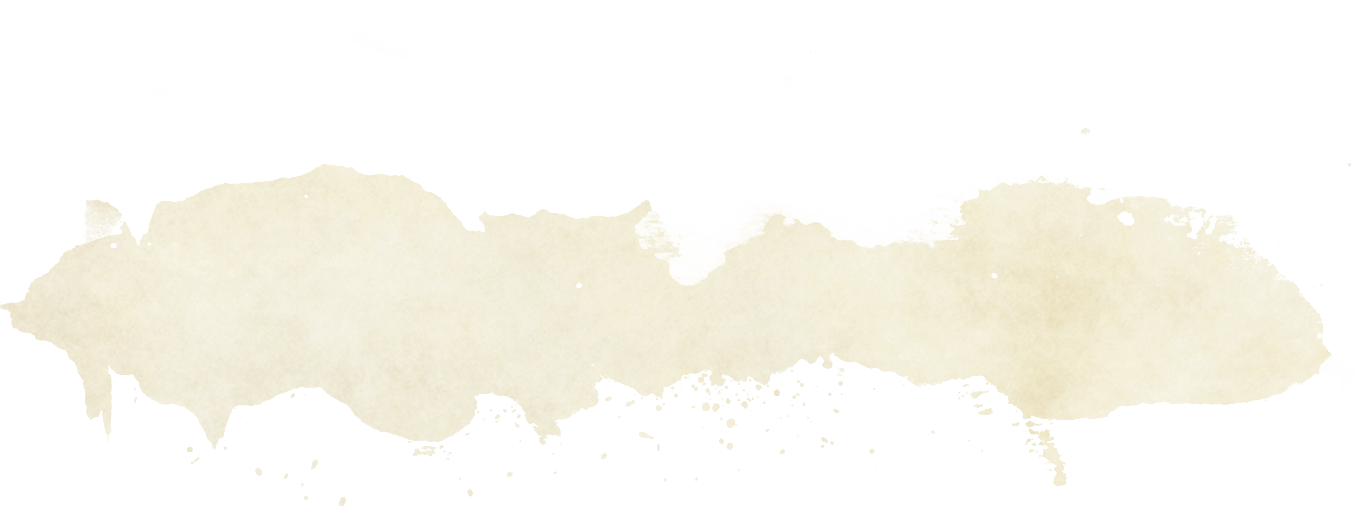
Otherworldly Patron
The Wayfarer*
Your patron is an enigmatic traveler who carries with them extraordinary knowledge and power. This traveler is not from your world, coming from origins unknown. A pact with this patron requires observation and documentation of your world that will feed their perpetual hunger for new knowledge. In return they will teach you to wield this knowledge as a weapon, even using it to manipulate the fabric of time.
*The Wayfarer's interest in knowledge allows you to use your Intelligence modifier or Charisma modifier as your Spellcasting ability.
Expanded Spell List
The Wayfarer lets you choose from an expanded list of spells when you learn a warlock spell. The following spells are added to the warlock spell list for you.
Wayfarer Expanded Spells
| Spell Level | Spells |
|---|---|
| 1st | Detect Magic, False Life |
| 2nd | Blur, Locate Object |
| 3rd | Haste, Slow |
| 4th | Arcane Eye, Divination |
| 5th | Reincarnate, Telepathic Bond |
Temporal Distortion
At 1st level, you learn the guidance cantrip. It counts as a warlock cantrip for you, but doesn't count against your number of cantrips known.
Additionally, your patron grants you the ability to turn back time for a second. When you fail an attack roll you can immediately reroll it as if it never happened. You must use the new roll.
Once you use this feature, you can’t use it again until you finish a short or long rest.
Secrets of the Universe
At 6th level, your patron rewards you with a glimpse into their pool of knowledge. You gain proficiency in History and one other of Arcana, Investigation, Nature, or Religion.
Additionally, you can choose to add your Intelligence modifier to overall damage dealt.
Temporal Displacement
Starting at 10th level, you stop time long enough to get out of the way of danger. When a hostile hits on an attack, you can use your reaction, before the damage is known, to avoid the hit, taking no damage, and move up to 30 ft. away.
Once you use this feature, you can’t use it again until you finish a short or long rest.
Temporal Knowledge
In exchange for the continued acquirement of knowledge for your patron, you can call on more of their power. As an action, you create a 30-foot sphere centered on a point you can see within 90 ft.. The area seems to collapse in on itself and pulls a number of creatures equal to your Charisma modifier towards its center. These creatures must make a Strength saving throw. A creature takes 12d8 force damage on a failed save, or half as much damage on a successful one.
The sphere lasts for a number of turns equal to your Intelligence modifier. On on each of your turns for the duration, you can use your action to deal half of the original damage to the target automatically. Creatures can repeat the saving throw at the end of each of its turns, ending the effect on itself on a success.
Once you use this feature, you can’t use it again until you finish a long rest.

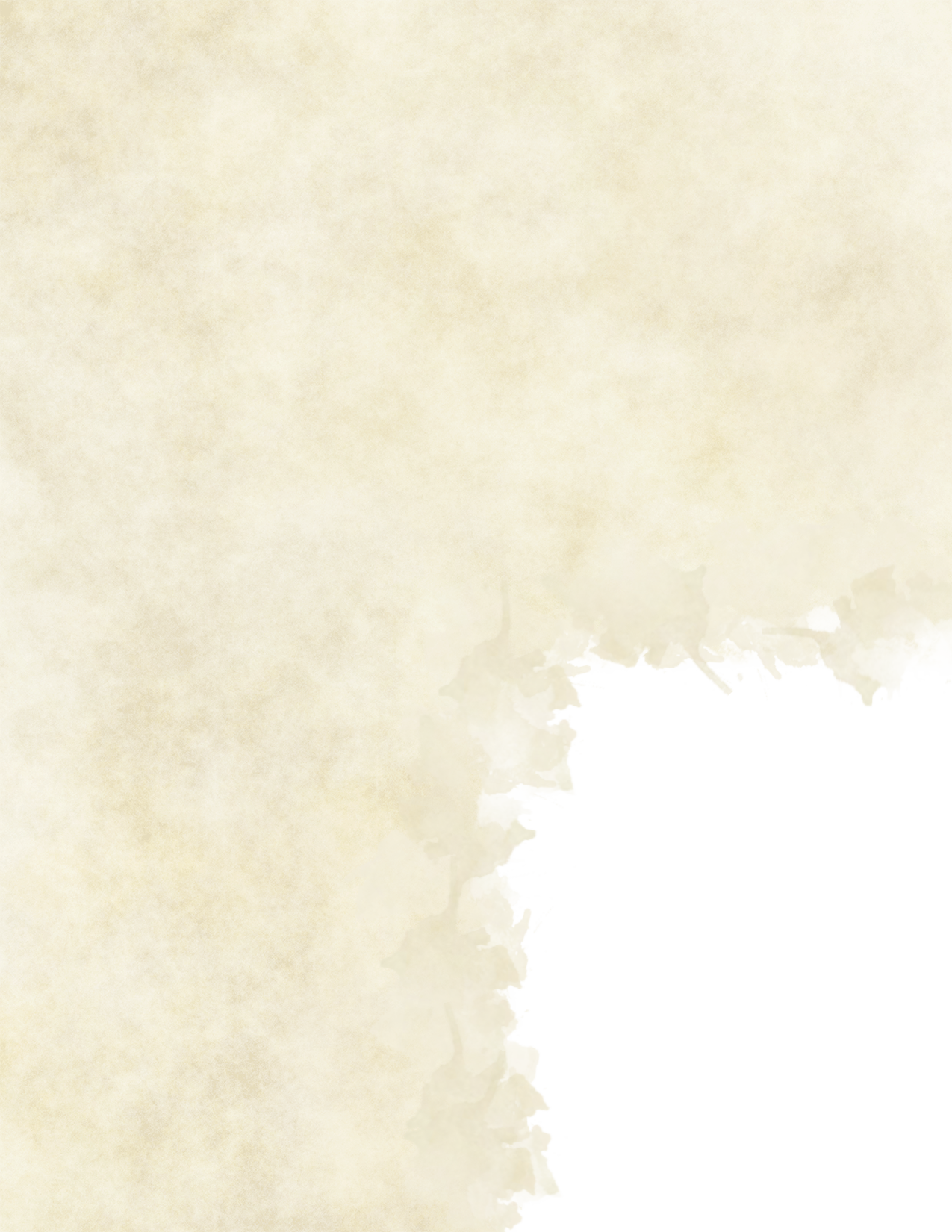
My Inspiration for the Wayfarer
My goal here was to create an otherwordly patron inspired by Doctor Who's Timelords. The patron is one who travels not only the
multiverse but through time as well. They
offer what knowledge and power they
possess based on their travels through
time and space.
Credits
- made by reddit user Gift_of_Goob
- Seunghee Lee Time Traveler art work from ArtStation
- Theo Larsonneur Time Travel watch art work from ArtStation
- Adam Burn Time Scout used as header art work, from ArtStation
- Reddit user flamableconcrete page stains Imgur


Martial Archetype
Artful Dodger
The archetypal Artful Dodger uses various ploys and tactics to gain an advantage on their opponent. Through misdirection and distractions, the Artful Dodger will foil a foe's attacks, and use any dubious method to gain advantage and win the battle.
Schemer
When you choose this archetype at 3rd level, you devise underhanded tactics, called ploys, that are fueled by special dice, called trick dice, to employ against your foes.
Ploys
You choose three ploys, which are detailed under "Ploys" below, to focus on and perfect. Many ploys will help you to achieve gaining the upper hand. You can use only one ploy per attack.
You learn one additional ploy of your choice at 7th level, 10th level, and 15th level. Each time you learn new ploys, you can also replace one ploy you know with a different one.
Trick Dice
You have four trick dice, which are d8s. A trick die is expended when you use it. You regain all of your expended trick dice when you finish a short or long rest.
You gain another trick die at 7th level, 10th level, and 15th level.
Saving Throws
Some of your ploys require your target to make a saving throw to resist the ploy's effects. The saving throw DC is calculated as follows:
Ploy save DC = 8 + your proficiency bonus + your Charisma or Dexterity modifier (your choice)
Bonus Proficiency
At 3rd level, you gain proficiency in one of the following skills Deception, Performance, Persuasion, or Sleight of Hand, and one of the following tools: Gaming set (one of your choice), Forgery kit, or Disguise kit.
Cunning Primer
Starting at 7th level, you can add half your proficiency bonus (round up) to your initiative rolls reflecting your readiness at getting the jump on your opponent.
Clever Schemer
At 10th level, your trick dice turn into d10s.
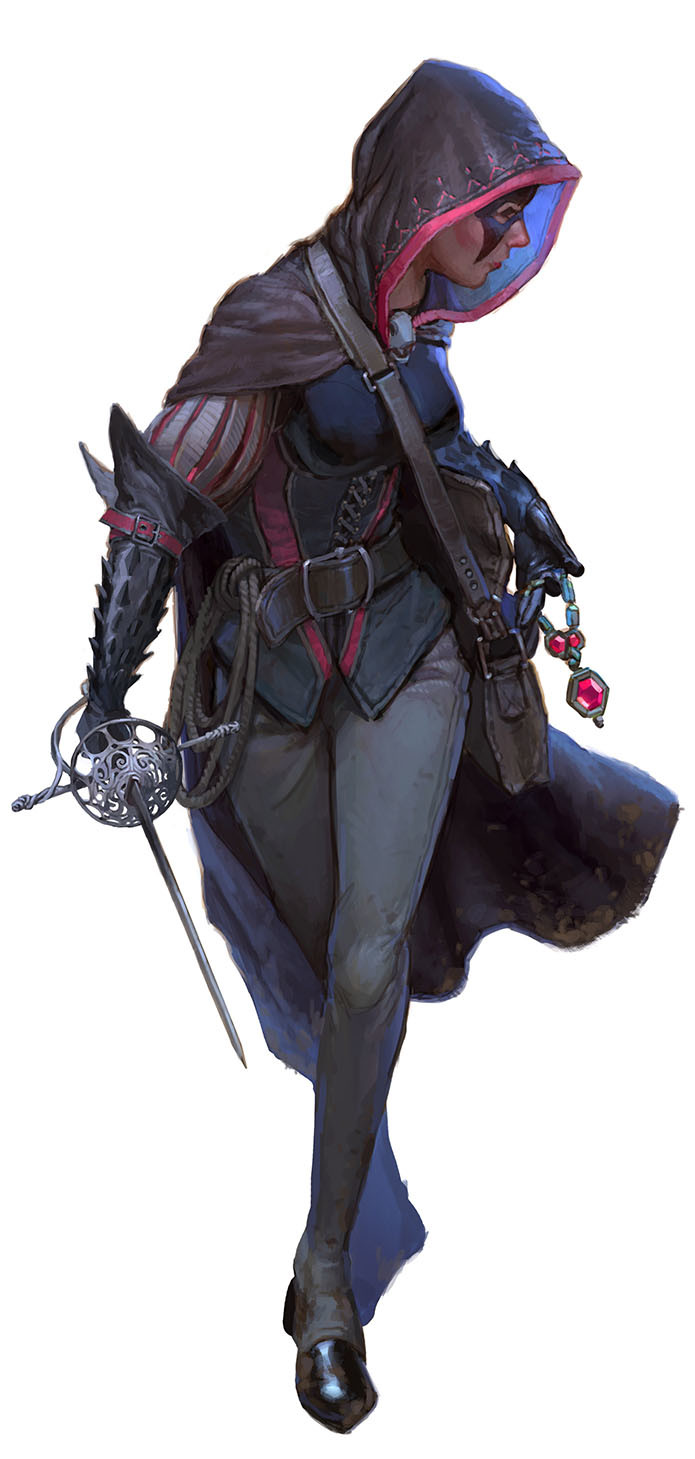
Resourceful Trickery
Starting at 15th level, when you roll initiative and have no trick dice remaining, you regain one trick die.
Adept Schemer
At 18th level, your trick dice turn into d12s.
Dead Man's Bluff
Starting at 18th level, your mastery at manipulating your surroundings through misdirection and deception can delay the grasp of death. If you take damage that reduces you to 0 hit points, you can use your reaction to delay falling unconscious, and you can immediately take an extra turn. While you have 0 hit points during that extra turn, taking damage causes death saving throw failures as normal, and three death saving throw failures can still kill you. When the extra turn ends, you fall unconscious if you still have 0 hit points.
Once you use this feature, you can’t use it again
until you finish a long rest.
Ploys
The ploys are presented in alphabetical
order.
Bait and Switch. When you hit a
creature with a weapon attack, you
can expend one trick die to bait the
creature if a different hostile creature
is within 5 ft of you. The target must
make a Wisdom saving throw. On a
failed save, the target attacks the
nearby hostile creature you have
managed to duck behind and
switch positions with. You add
the trick die to the hostile's
attack damage.
Cheap Shot. When an ally hits a creature
within 10 ft of you with a weapon attack,
you can expend one trick die to attempt to
disarm the target, forcing it to drop one item
of your choice that it's holding. You add the
trick die to your ally's attack damage roll, and
the target must make a Strength saving throw.
On a failed save, it drops the object you choose.
The object lands at its feet.
Feign Injury. When a creature misses you with an attack,
you can fake an injury as a reaction gaining advantage against your first attack on that creature during your next turn. You expend one trick die to make a weapon attack against the creature. If you hit, you add the trick die to
the attack's damage roll.
Hustle. When you hit a creature with a melee attack,
you can expend one trick die to attempt to knock the
target down. You add the trick die to the attack's damage
roll, and if the target is Large or smaller, it must make a Strength saving throw. On a failed save, you knock the target prone, on a success you push them back 5ft.
Interference. When an ally within 10ft that you can see, is hit by an attack you can use your reaction to run interference. You use the trick die to reduce the damage by the number you roll on your trick die + your Dexterity modifier.
Low Blow. When you make a melee attack on your turn, you can expend one trick die to hit the creature in a vulnerable spot. If you hit, you add the trick die to the attack's damage roll and the creature you attacked is unable to move on their next turn, and has disadvantage on Dexterity saving throws.
Misdirection. When you move to attack a creature any hostile creatures that would get an attack of opportunity on you, equal to your Dexterity modifier, must make a Wisdom saving throw. On a failed save they now have
disadvantage on the opportunity attack roll against
you. Add the trick die used to your attack roll.
Sabotage. When you hit a creature, as a
bonus action you can use a trick die to attempt
to sabotage them. The creature must make a
Dexterity saving throw. On a failed save, attack
rolls against them have advantage until the end
of your next turn. You add the trick die to the
attack's damage.
Subterfuge. When you hit a creature with a weapon
attack, you can expend one trick die to attempt to
knock the target down. You add the trick die to the
attack's damage roll, and if the target is Large or
smaller, it must make a Strength saving throw.
On a failed save, you knock the target prone.
Taunt. When you hit a creature with a weapon
attack, you can expend one trick die to taunt
the creature, giving your allies an immediate
opening. You add the trick die to the
attack's damage roll. Any ally within 5 ft of
the creature gains an attack
of opportunity.
Credits
- made by reddit user Gift_of_Goob
- Eric Summers Gnome fighter artwork from artstation.com
- Clint Cearley Thief artwork from artstation.com
- Redit user flamableconcrete page stains Imgur
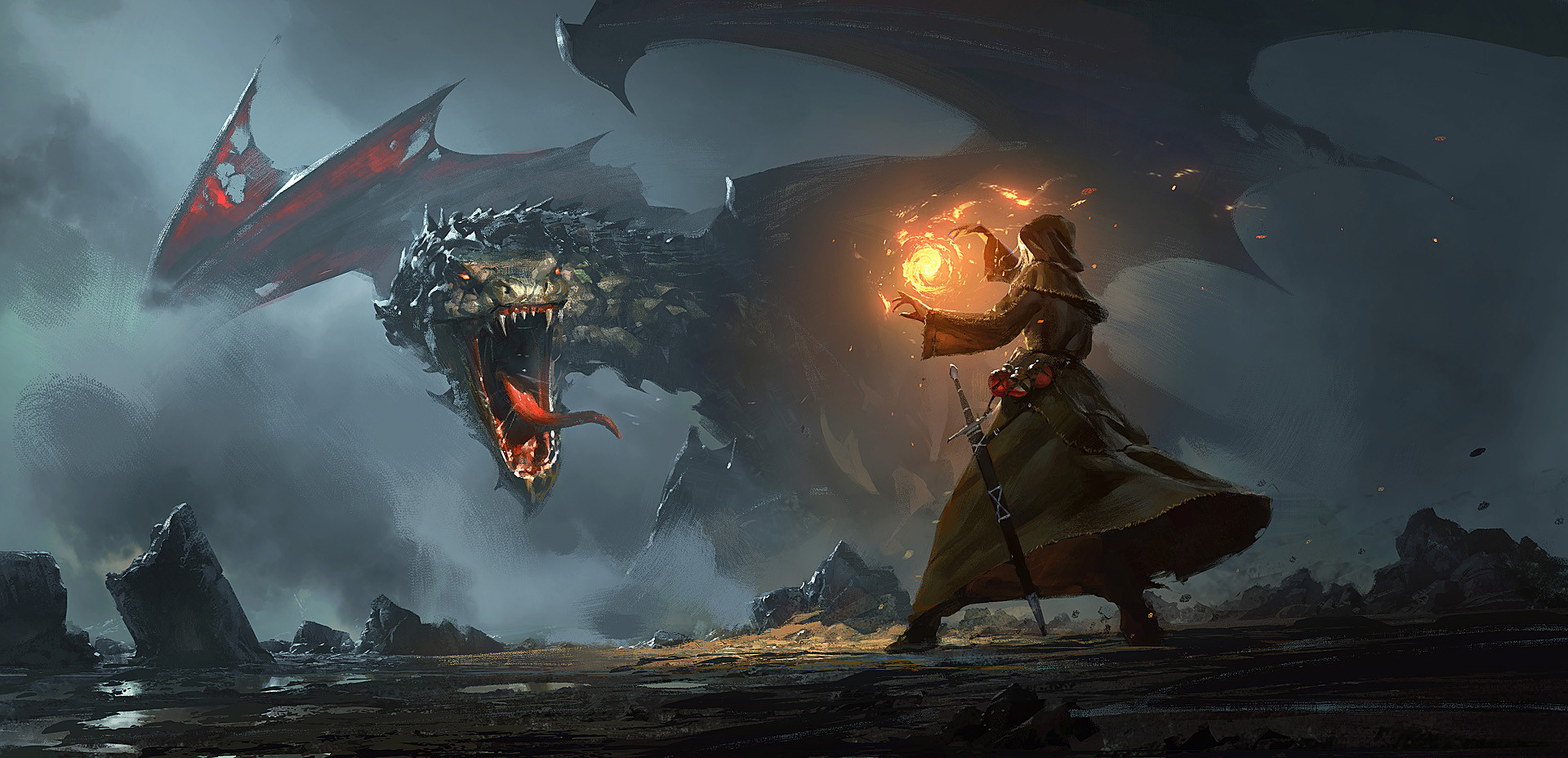

Otherworldly Patron
The Dragon
Your patron is a dragon - a winged reptile of ancient lineage and fearsome power. In exchange for a dragons power, you must gather what they covet most. They covet wealth, hoarding mounds of coins and gathering gems, jewels, and magic items. Beings of this sort include Zethrindor; Anwir Dupretiskava; Adamarondor; or other ancient dragons. In very rare cases, it could even be Bahamut or Tiamat.
Expanded Spell List
The Dragon lets you choose from an expanded list of spells when you learn a warlock spell. The following spells are added to the warlock spell list for you.
The Dragon Expanded Spells
| Spell Level | Spells |
|---|---|
| 1st | Absorb Elements, Detect Magic |
| 2nd | Dragon Breath, Locate Object |
| 3rd | Elemental Weapon, Wind Wall |
| 4th | Polymorph, Secret Chest |
| 5th | Dominate Person, Legend Lore |
Heart of the Dragon
At 1st level, you choose one type of dragon as your patron. The damage type associated with each dragon are used by features you gain later:
Dragon Patron Table
| Dragon Color | Damage Type |
|---|---|
| Black | Acid |
| Blue | Lightning |
| Brass | Fire |
| Bronze | Lightning |
| Copper | Acid |
| Gold | Fire |
| Green | Poison |
| Red | Fire |
| Silver | Cold |
| White | Cold |
Dragon Tongue
Starting at 1st level, you learn to speak, read, and write draconic.
Dragon Sight
At 1st level, you gain advantage on perception rolls when searching for treasure.
You also gain the ability to see things as they actually are. For the next 10 minutes, you have truesight and notice secret doors hidden by magic, both out to a range of 60 feet. Once you use this feature, you cannot use it again until after you finish a short or long rest.
Body of the Dragon
At 6th level, your skin becomes tough like the hide of your dragon patron. Your hit point maximum increases by 1 and increases by 1 again whenever you gain a level in this class.
In addition, as a bonus action, wings sprout from your back and you gain a flying speed equal to your walking speed that lasts for 10 minutes. You can use this bonus action a number of times equal to your Charisma modifier, and you regain all expended uses when you finish a long rest.
Mind of the Dragon
Starting at 10th level, you are immune to being frightened and gain resistance to the damage type determined by your dragon patron.
In addition, the first creature you hit on each of your turns with a weapon attack takes extra damage equal to 1d6 + half your warlock level. The extra damage type is that of your dragon patron.
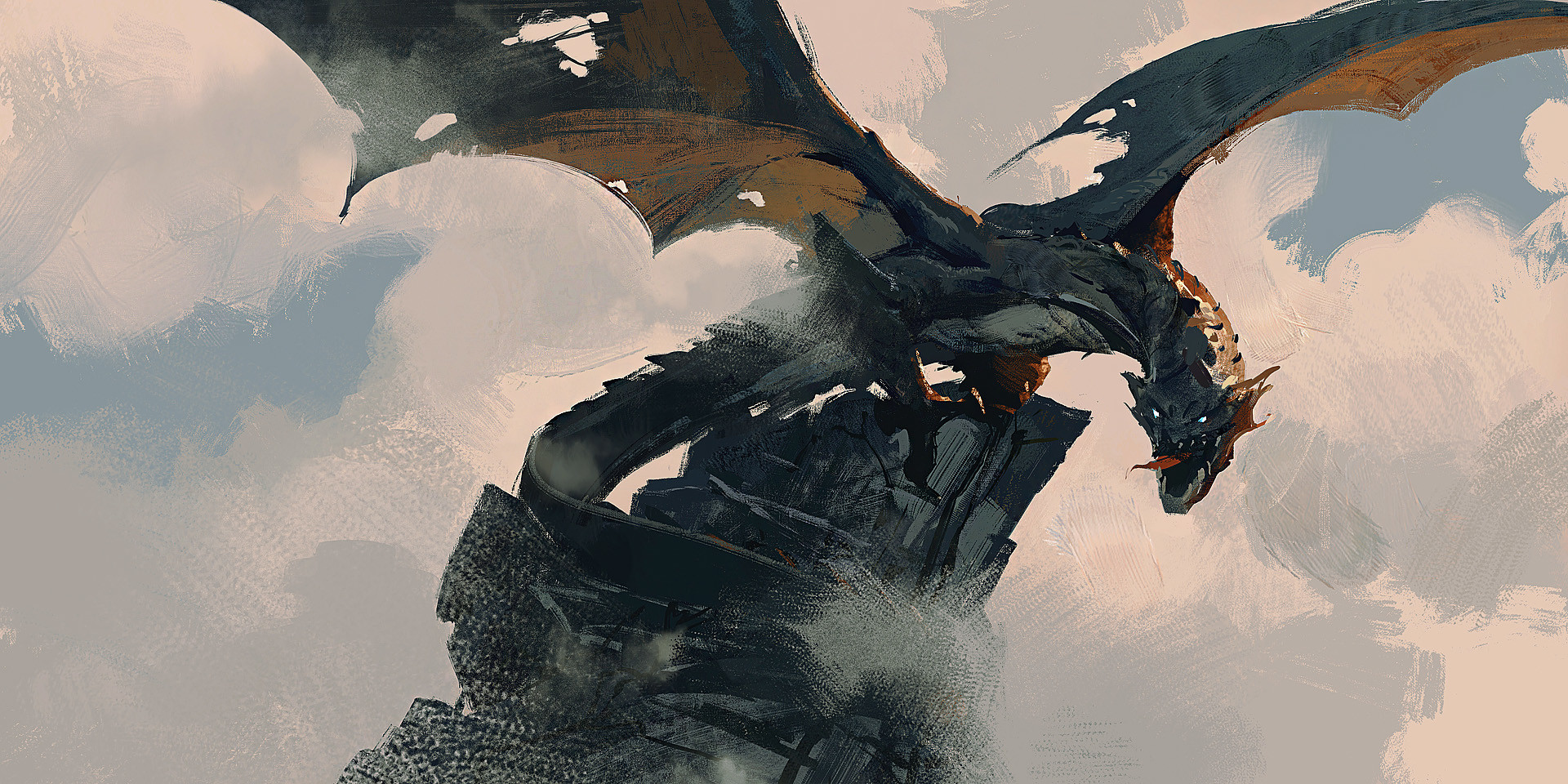

Spirit of the Dragon
Starting at 14th level, you can summon the spiritual essence of your patron, and it covers you like a shroud. For 1 minute, a number of hostile creatures equal to your Charisma modifier that can see you must succeed on a Wisdom saving throw or be frightened. A creature that succeeds on this saving throw is immune to the spiritual essence of your patron for 24 hours.
Once you use this feature, you can’t use it again until you finish a long rest.
Credits
- Created by Reddit user Gift_of_Goob
- Greg Rutkowski artwork Dragon Rock & Dragon Cave ArtStation
- Page stains by FlamableConcrete
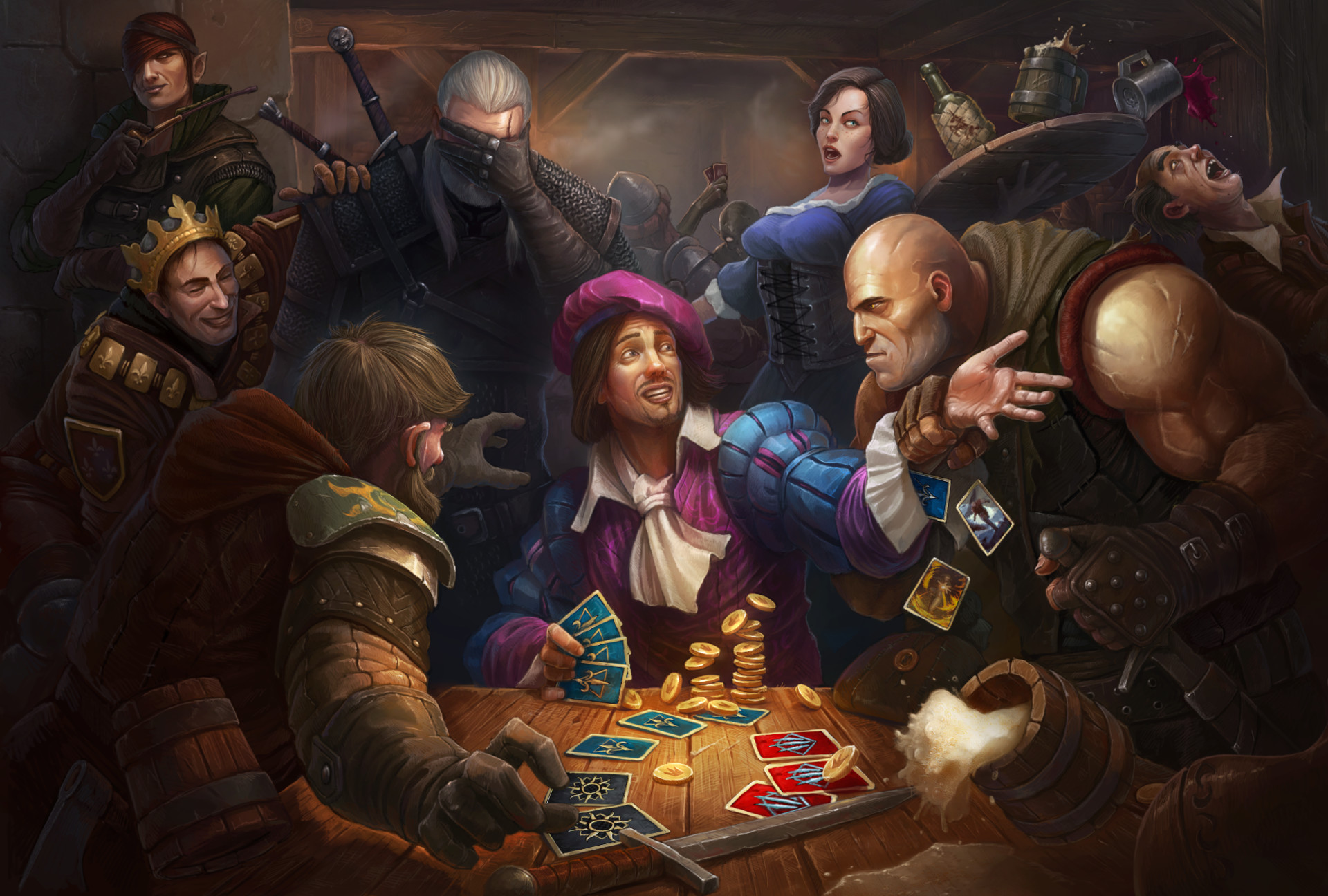

Roguish Archetype
Cardsharp
You love a good game of cards. You've focused training on sleight of hand and winning at any cost. Your natural skill and use of deception has made you a very successful cardsharp. You travel the land looking for your next mark. You excel at reading people and situations allowing you to avoid trouble before it starts. During one of your excursions, you obtained the means to a deck of enchanted cards. They come in handy when you can't avoid the trouble that seems to always find you.
Enchanted Cards
Your deck of enchanted cards look like a typical deck of playing cards, except they are made of sturdy thin carved wood, or other similar material.
The design on each card has been painstakingly etched or painted on the surface in a ritual that binds the artist to the deck. As soon as the cards change hands, becoming the property of someone else, they become a blank deck of playing cards and the binding ritual (See. Attunement) must be completed before they work for the new owner. The Enchanted Deck does not count as one of your attuned items.
Additionally, the enchantment allows whoever prepares it to utilize them as a weapon and even cast spells from them. The cards contain different properties based on the card design. Aces can cast cantrips, plain cards deal weapon damage, and court cards can cast up to level four spells.
Cardsharp Spellcasting
| Rogue Level |
Cantrips Known |
Spells Known |
---Court Cards Per Level--- 1st 2nd 3rd 4th |
|---|---|---|---|
| 3rd | 3 | 3 | 2 ---- ---- ---- |
| 4th | 3 | 4 | 3 ---- ---- ---- |
| 5th | 3 | 4 | 3 ---- ---- ---- |
| 6th | 3 | 4 | 3 ---- ---- ---- |
| 7th | 3 | 5 | 4 2 ---- ---- |
| 8th | 3 | 6 | 4 2 ---- ---- |
| 9th | 3 | 6 | 4 2 ---- ---- |
| 10th | 4 | 7 | 4 3 ---- ---- |
| 11th | 4 | 8 | 4 3 ---- ---- |
| 12th | 4 | 8 | 4 3 ---- ---- |
| 13th | 4 | 9 | 4 3 2 ---- |
| 14th | 4 | 10 | 4 3 2 ---- |
| 15th | 4 | 10 | 4 3 2 ---- |
| 16th | 4 | 11 | 4 3 3 ---- |
| 17th | 4 | 11 | 4 3 3 ---- |
| 18th | 4 | 11 | 4 3 3 ---- |
| 19th | 4 | 12 | 4 3 3 1 |
| 20th | 4 | 13 | 4 3 3 1 |
Enchanted Cards Deck
There are three types of cards in your Enchanted Deck:
First are the Ace cards. They are designed to be cantrips.
Next are your Plain cards. They are thrown at a creature or object as a magical weapon, and are used in combination with The Draw feature.
Third, and finally, are the Court Cards. These serve two purposes. First as your means of casting spells, and second as a means to bolster your overall abilities through the Ante feature.
Spellcasting
Aces Up Your Sleeves. At third level, you learn three cantrips by designing Ace cards for your enchanted card deck. One of them must be the Sword Burst cantrip. The two others are cantrips of your choice from the wizard spell list.
At 10th level, when you learn another cantrip you can design your final Ace card. You can also exchange two of your previous cantrips for new ones by spending time to redesign the previous cards with their new cantrip.
Spells Known of 1st-Level and Higher. At third level, you know three 1st-level wizard spells of your choice, two of which you must choose from the abjuration and conjuration spells on the wizard spell list.
The Spells Known column of the Cardsharp Spellcasting table shows when you learn more wizard spells of 1st level or higher. Each of these spells must be an abjuration or conjuration spell of your choice, and must be of a level for which you have Court Cards. For instance, when you reach 7th level in this class, you can learn one new spell of 1st or 2nd level.
The spells you learn at 8th, 14th, and 20th level can come from any school of magic.
Whenever you gain a level in this class, you can replace one of the wizard spells you know with another spell of your choice from the wizard spell list. The new spell must be of a level for which you have spell slots, and it must be an abjuration or conjuration spell, unless you’re replacing the spell you gained at 3rd, 8th, 14th, or 20th level from any school of magic.
Preparing Court Cards and Casting Spells. To cast a spell of spell of 1st-level or higher as a Cardsharp, you must have prepared that spell onto a Court Card. You prepare the Court Card with the level of the spell you wish to use, from spells that are known to you.
For example, if you are a 7th-level Cardsharp, you have four 1st-1evel and two 2nd-level court cards. If you prepare the magic missile spell design onto a court card as a 1st-level spell, it can only be used as a 1st-level spell. To cast it as a 2nd-level spell you must design a court card for magic missile as a 2nd-level spell.
You regain all expended court cards when you finish a long rest. Also, you can change the spell design on your court cards during a long rest. Preparing new court cards requires time spent etching, or painting, your design of the spell onto the court card: at least 5 minutes per spell level for each court card.
Spellcasting Ability. Intelligence is your spellcasting ability for your wizard spells, since you use a studied eye to transfer the essence of the spell onto your court card. You use your Intelligence whenever a spell refers to your spellcasting ability. In addition, you use your Intelligence modifier when setting the saving throw DC for a wizard spell you cast and when making an attack roll with one. Due to the unique way your spells are cast you do not require material components except those listed with a gold amount.
Spell Save DC
Spell attack modifier
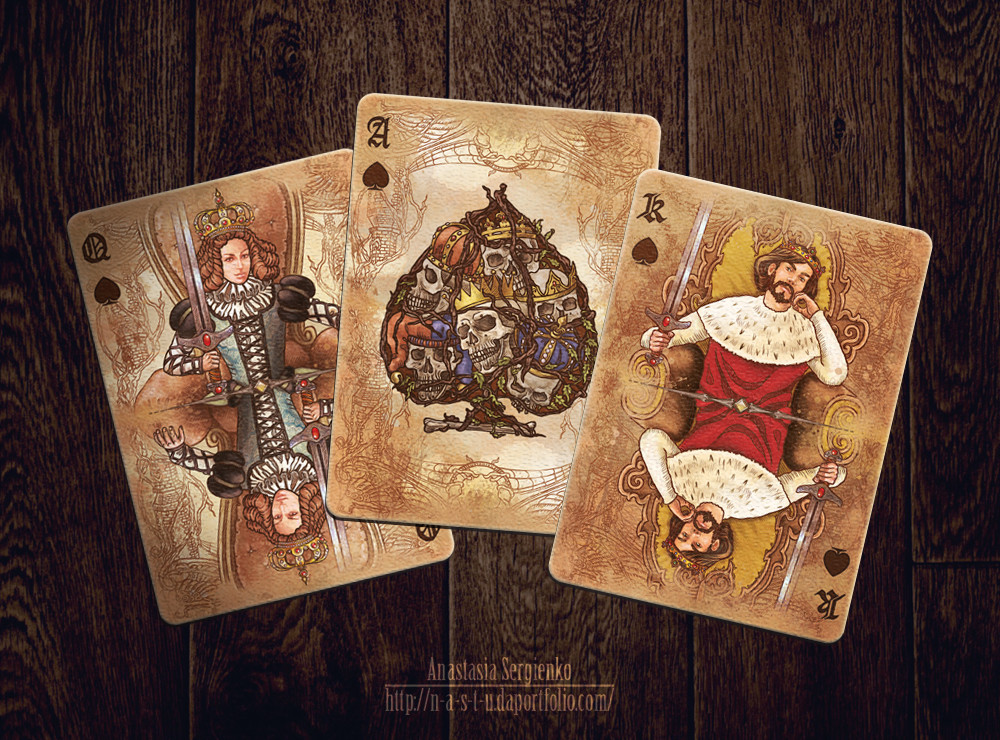
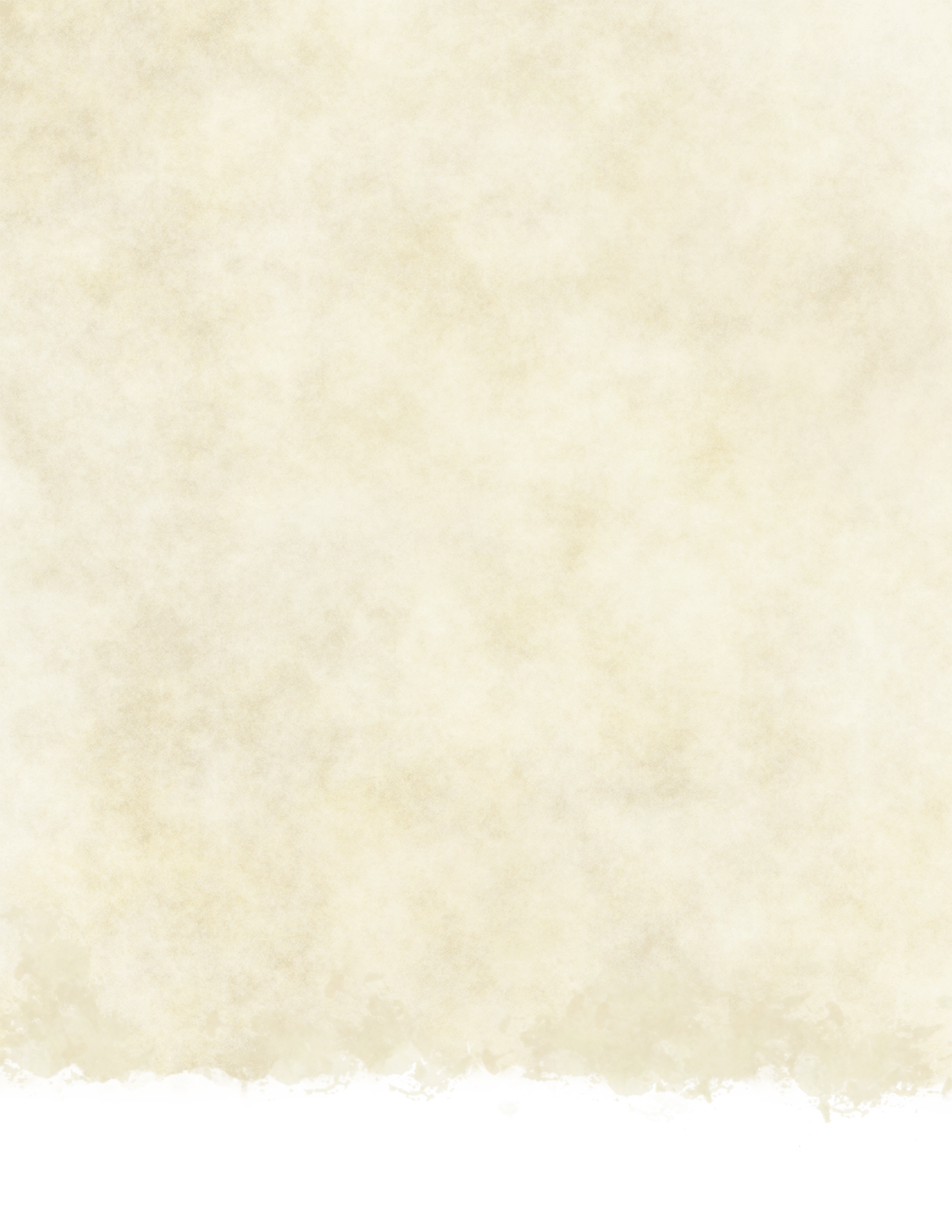

Bonus Proficiencies
At 3rd level, you gain proficiency in playing card sets and one other of Woodcarver's tools or Painter's supplies. You also choose one from deception, insight, or sleight of hand to become proficient in.
Also, treat a roll of 5 or below as a 6 on Wisdom (Insight) and Charisma (Deception) skill checks.
Plain Cards
When you choose this archetype at 3rd level, Plain cards in your Enchanted Deck can be used as a magic weapon (See. Plain Card Damage table.). You have proficiency with them.
When you take the Attack action with plain cards, you can throw one card as an attack during the Attack action, or take from the draw and instead throw two, or three cards total as an attack during the Attack action. Plain cards reappear in the deck after each use.
The Draw
The Draw is a number of cards equal to your Intelligence modifier + your proficiency bonus that adds damage to an attack. When you take the Attack action, and use your plain cards to attack, you can add one or two cards from the draw to your attack.
For example, if at 3rd level your Intelligence modifier is three and your proficiency bonus is two, the draw equals five cards. On your next turn, you take the Attack action and use two cards from the draw. You are left with three cards remaining in the draw.
With your three remaining draw cards, you can choose to throw two on your next turn when you take the Attack action, leaving you with a single card to use on a following turn, or you can use the three remaining cards on three separate Attack actions.
Once you use all cards from the draw, you can’t use them again until you finish a long rest.
Hand Mucking
Starting at 9th level, you are able to use your extensive experience as a Cardsharp to palm a number of cards equal to your Dexterity modifier to add to the Draw.
This feature can be not be used again until after a short
or long rest.
Ante Up
Starting at 13th level, you gain the option to make an Ante. An Ante allows you the opportunity to receive greater benefits in certain circumstances.
At 13th level, you are allowed three Antes. You choose Antes from the Antes Options list. You then etch the design of it into a Court Card.
Antes can be used after you know if an attack hits or misses. You can only use one Ante per turn, and may have no more than two of the same Antes in your deck. You can spend 5 minutes per Court Card during a long rest to change your Antes. You then etch the design of it into a Court Card. You gain back any Antes spent after a long rest.
You gain two more Antes at 17th level (total of 5).
Ante Options
Hearts When you take the Attack action and hit, you gain temporary hit points equal to your Intelligence modifier + proficiency bonus.
Clubs When you take the Attack action and hit, you deal additional damage equal to your Intelligence modifier
+ half your Rogue level (rounded up).
Diamonds When you take the Attack action and hit, the target becomes incapacitated until the end of its next turn.
Spades When you take the Attack action and hit, you ignore any resistances to damage type the target has equal to your Intelligence modifier + proficiency.
Joker When you are hit by an attack, as a reaction, you can deflect some of the damage back onto your attacker. If you are hit, your attacker takes half the damage intended for you.
Shuffle When you use the Attack action and miss, you can reroll for a second chance.
Plain Card Damage
| # of Plain Cards | Damage | Properties |
|---|---|---|
| One | 1d4 bludgeoning | Finesse, thrown (range 20/60) |
| Two | 1d4+2 bludgeoning | Finesse, thrown (range 20/60) |
| Three | 1d4+3 bludgeoning | Finesse, thrown (range 20/60) |


Double Down
Beginning at 17th level, when taking the Attack action and attacking by throwing an additional one or two Plain cards from the Draw pile, the cards are imbued with force damage according to the Double Down table.
Double Down Table
| # of Cards Thrown | Plain Cards Sum Total | Damage |
|---|---|---|
| 2 | 2 | Reroll and cards do half damage; target is not pushed back |
| 2 | 3 - 8 | 2d4 force; pushed back 5ft |
| 2 | 9 - 14 | 3d4 force; pushed back 10ft |
| 2 | 15 - 20 | 4d4 force; pushed back 15ft |
| 3 | 3 | Reroll and cards do half damage, target is not pushed back |
| 3 | 4 - 12 | 3d4 force; pushed back 10ft |
| 3 | 13 - 21 | 4d4 force; pushed back 10ft and falls prone |
| 3 | 22 - 30 | 5d4 force; pushed back 15ft and falls prone |
Double Down: Deck of cards, or dice?
If using a regular deck, remove all face cards, then shuffle the remaining cards. Draw the desired amount of cards, 2 or 3, and add them together for the Sum Total. See the Double Down Table. Aces count as one.
When using dice, roll Xd10, add them together for the Sum Total. See the Double Down Table.
Suggestions for upgrading, replacing, or modifying your Enchanted Cards
Enchanted Cards: Upgrade or Replacement
The life of an Adventurer can be perilous and hard. If at anytime your Enchanted Cards are lost, stolen, or worst case destroyed, they can be replaced, and the binding ritual recast. (See. Attunement)
You can attempt to make your own deck of cards, or have it professionally done by an appropriate artisan (i.e. Wood cards - Woodcarver, Metal cards - Blacksmith, etc.)
Suggested prices based on materials, upgrade, and time taken to make:
- Wood 50 gp (damage as shown in Plain Card Damage chart)
- Stone 75 gp (short/long range increased by 20/60 ft)
- Bone 250 gp (initiative increases by +1)
- Gemstone 500 gp (increases damage by +1)
- Metal 5000 gp (increases damage done by 1d4+1)
Enchanted Cards: Modifications
Your enchanted cards can be modified to cause Slashing damage. It can be done by an artisan in a town you stop by, or by your character during their downtime.
If done by someone who is not your character, the DM picks a reasonable time and price for the work being done.
If your character chooses to sharpen the cards edges on their own, it requires 8 hours of downtime. This time can be broken up between short and long rests, requires a d20 roll of 12 or higher, and artisan tools (add your proficiency bonus to the d20 roll if proficient in the tools you use). If the roll fails, add one hour to the required time.
The cards do not cause Slashing damage until the complete deck has been sharpened.
Credits
- made by reddit user Gift_of_Goob
- Tony Sart Cardsharper artwork from ArtStation
- Anastasia Sergienko Poker cards artwork from ArtStation
- Larry Wilson Smokin' Aces artwork from ArtStation
- Tatyana Kupriyanova Cornerclub Gambler artwork from ArtStation
- Reddit user flamableconcrete page stains Imgur


